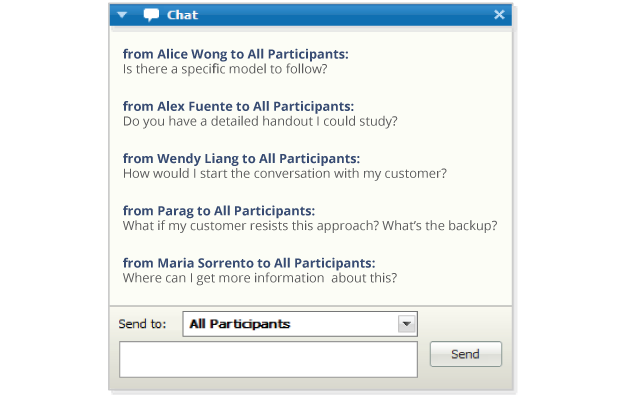PART 1: Masterful WebEx Presentations: Planning and Design
Most agree. It’s crazy-scary making virtual presentations to a large, unknown audience. Hell, it’s scary presenting to a small, known audience. As you’re serving up your brilliant ideas, you can’t see a reaction, you don’t know if you’re going too fast or too slow, and if you do lose them… how long ago was it? Oh, and then there’s the distractions. Emails, texts, and IMs screaming “Read me! Read me!” So how does anyone offer an engaging, informative, and entertaining (yes, entertaining) virtual presentation? The answer is simple: superior design, creative planning, and top-notch delivery.
Here are 3 crucial design tips that will help you lock in your virtual audience. Stay tuned for Part 2 coming soon!
1. Plan and prepare the interactive tools you are going to need most
Web presentations tank for two main reasons: your audience is bored or you are not responding to their needs sufficiently. Want to know the way to attack both of those potential pitfalls? Keep them interacting with you and with each other. Your web conferencing platform is filled with tools to promote interactivity – launch a poll, ask for chat responses, activate a Q&A session, etc. These tools keep the conversation lively and they also provide critical feedback during the session. Am I going too fast? Is this content resonating? Are they eager to participate in a conversation? Find out! But don’t use these tools randomly. Anticipate which tool will bring you the type of feedback that will keep you tuned in with your audience.
In this Chat discussion example, the presenter can see where the audience is getting confused.
2. Build your decks for virtual delivery, not face-to-face
Visuals help your ideas be memorable
For face-to-face presentations, great visuals are important. But for virtual presentations or meetings, they are the lifeblood. Can you image watching “Game of Thrones” in bullet points? Ok, maybe this is an extreme example, but seriously, lackluster visuals will kill your virtual presentation. Why? Because we know that visuals are processed remarkably faster than text alone. And, in an environment where you don’t have the benefit of human body language, compelling visuals are what will draw your audience in. See the following example:
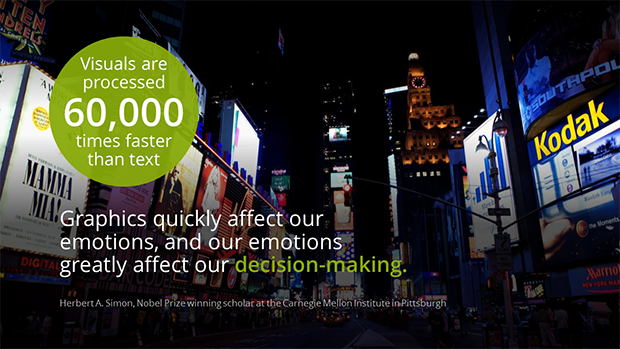
Don’t just deliver an online slideshow. Design a ground-up presentation for your virtual meetings, trainings or demos that is filled with powerful, thoughtful visuals.
Placeholder slides help guide flow
Slide decks for virtual presentations should provide a guided, logical flow that take into account every moment of the presentation. Taking a 5-minute break in your presentation? Moving to a new topic area? Soliciting feedback from your audience? Provide a slide to cue your audience (and you) into what’s happening next. These placeholder slides should be strategically arranged to make you stop and interact with your audience (we recommend) every 3-5 minutes. Here are three great examples of slides that cue the audience for what’s up next:
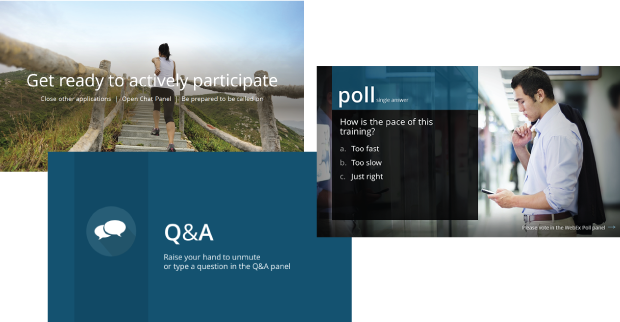
Build in behind-the-scenes navigation
You’ve just realized that you lost your audience twelve slides ago. Web conferencing platforms let you build in a neat trick. Instead of clunkily scrolling back through the last dozen slides, you can enable the ‘thumbnail’ view of the deck that is visible only to you. Behind the scenes, jump to any slide quickly. See example below:
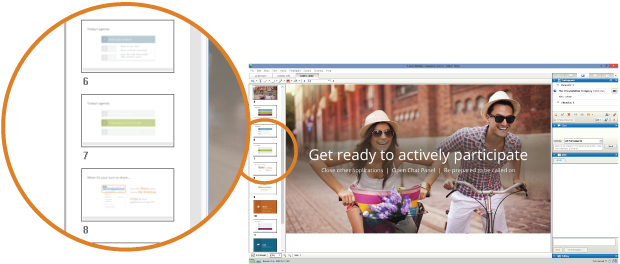
3. Plan for the size of your audience
Audience size makes a big difference when planning virtual interaction. A global sales force will participate at a much different level than a small HR department. You can’t possibly invite thousands of people to write on a white board at once, or encourage chat responses (unless you have a team of assistants to answer). Polling however is great for large audiences (see more about savvy polling in Part 2 of our Masterful WebEx Presentations series). Think it through: how do you want to engage? What are the right tools for the size of your audience?
Below is an example of a Q&A session. Q&A is a great feedback tool, that can be utilized any time during a presentation (in fact, we recommend that you don’t wait until the end of your virtual meeting to pause for Q&A). Each discussion is threaded, meaning responses to each question are grouped together. Tracking multiple discussions is easy. For large meetings however, having a dedicated member of your team responsible for answering live Q&A is helpful! But if it’s just you, be sure to carefully plan ahead when you are going to check in and pause for a Q&A break.
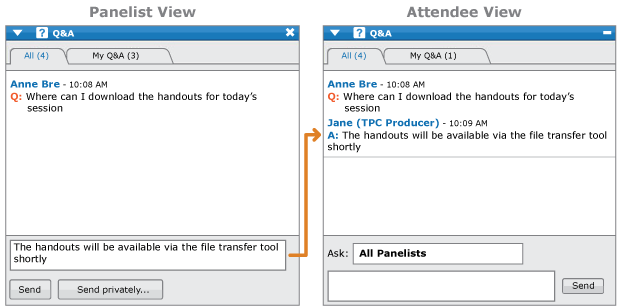
Coming soon: More expert planning and design tips in Part 2 of Masterful WebEx Presentations. For now? Check out Successful Online Presentations, our popular course teaching many of these state-of-the-art design and delivery techniques through instructor demo and hands-on practice.

